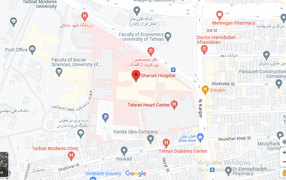Relationship with lung carcinoma in the patients with Anthracosis by detection of expression of P16 and MUC1 genes
.jpg)
Abstract
Introduction and objective: Anthracosis is a pneumoconiosis caused by coal dust. The term “pneumoconiosis” refers to an occupational lung disease caused by long-term inhalation of dust. To achieve more efficient diagnosis and treatment methods, changes in the expression of MUC1 and P16 genes in the patients with anthracosis and their relationship with none-small cells lung carcinoma were examined. Methodology: Thirty anthracosis samples (center of lesion) and thirty healthy samples (edges of lesion) were collected from anthracosis patients diagnosed by a specialist. The patients signed a written letter of consent beforehand. The expression of MUC1 and P19 biomarkers was measured through Real-Time PCR. The relationship of the expression of biomarkers with tumor staging and lung carcinoma stage was examined. Results: The two groups in the study were compared using t-test. P16 marker was positive at the center and edges of lesions in seven (out of 30) and 18 (out of 30) cases respectively. There was a significant difference between positive P16 markers at the center and edges of the lesions (p-value<0.001). MUC1 marker was positive at the center of lesions in 21 cases out of 30 (sensitivity = 70%) and it was positive at the edges of lesions in seven cases out of 30. In termsesions (p-value<0.001). Conclusion: The results indicated a relationship between anthracosis and lung carcinoma. Clearly, the positive cases of P16 genes at the edges of lesions were higher than that at the center; while, the positive cases of MCU1 gene at the center of lesions were higher than that at the edges. Further studies with larger sample groups are needed to provide more evidences.



